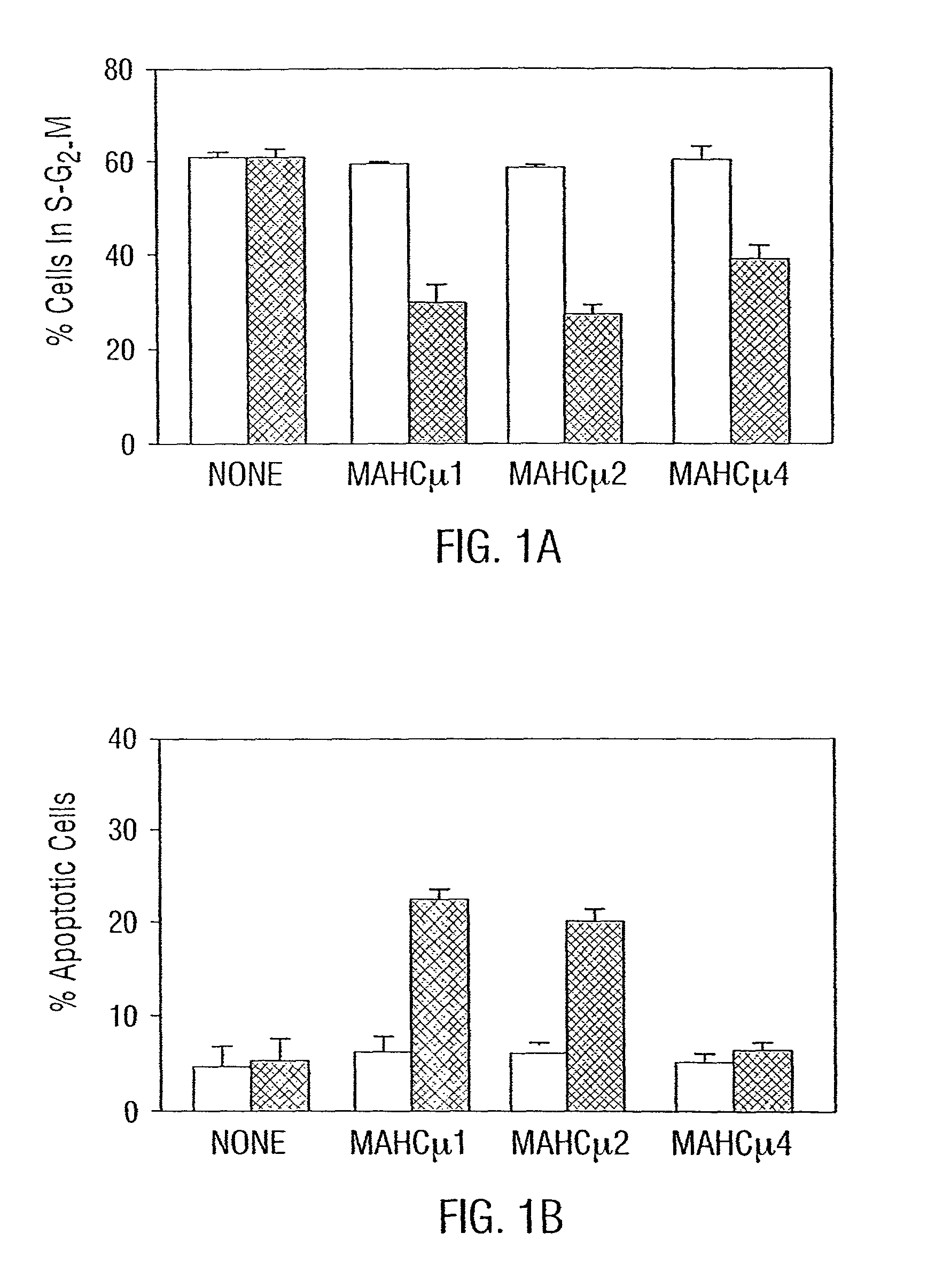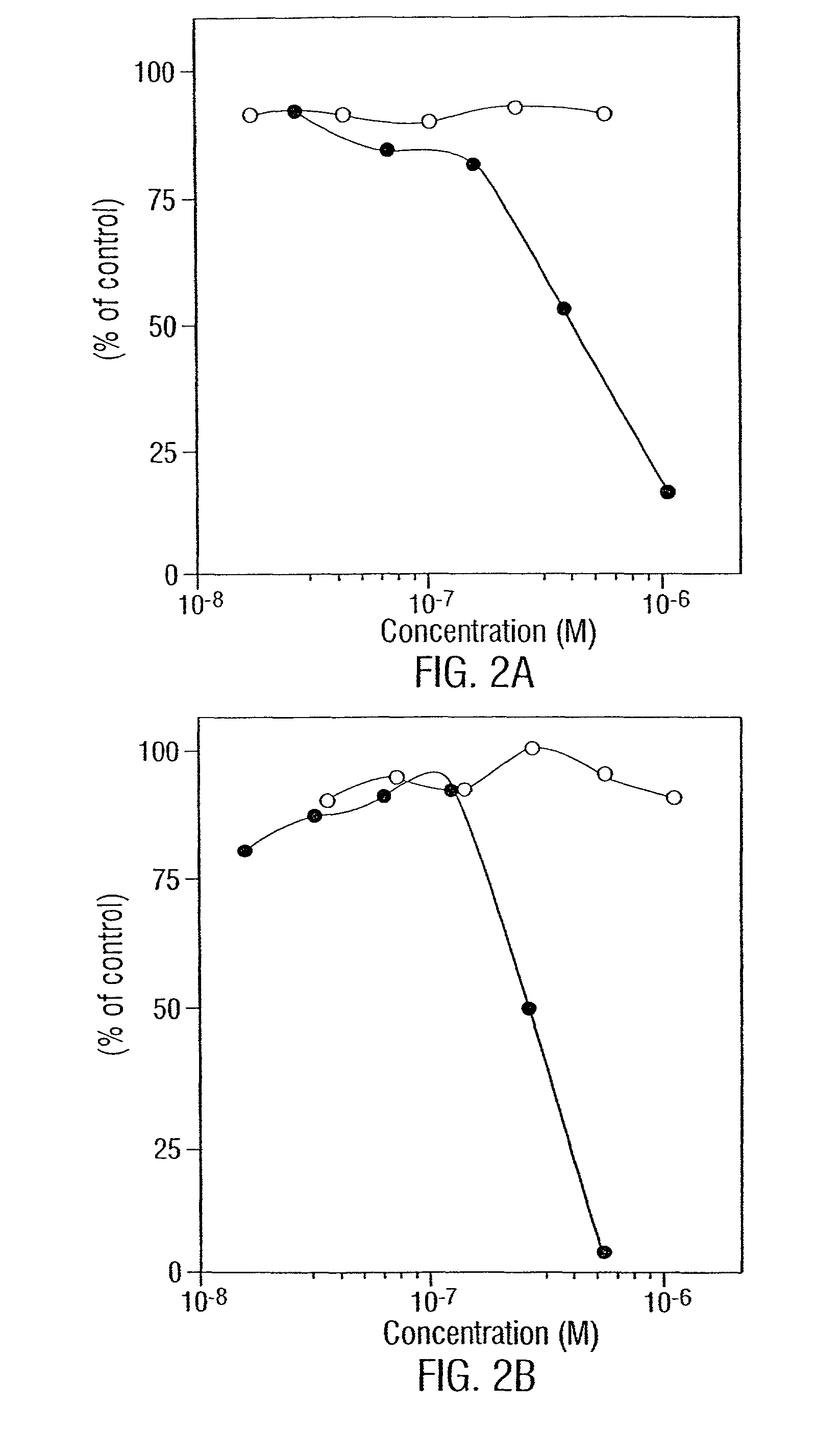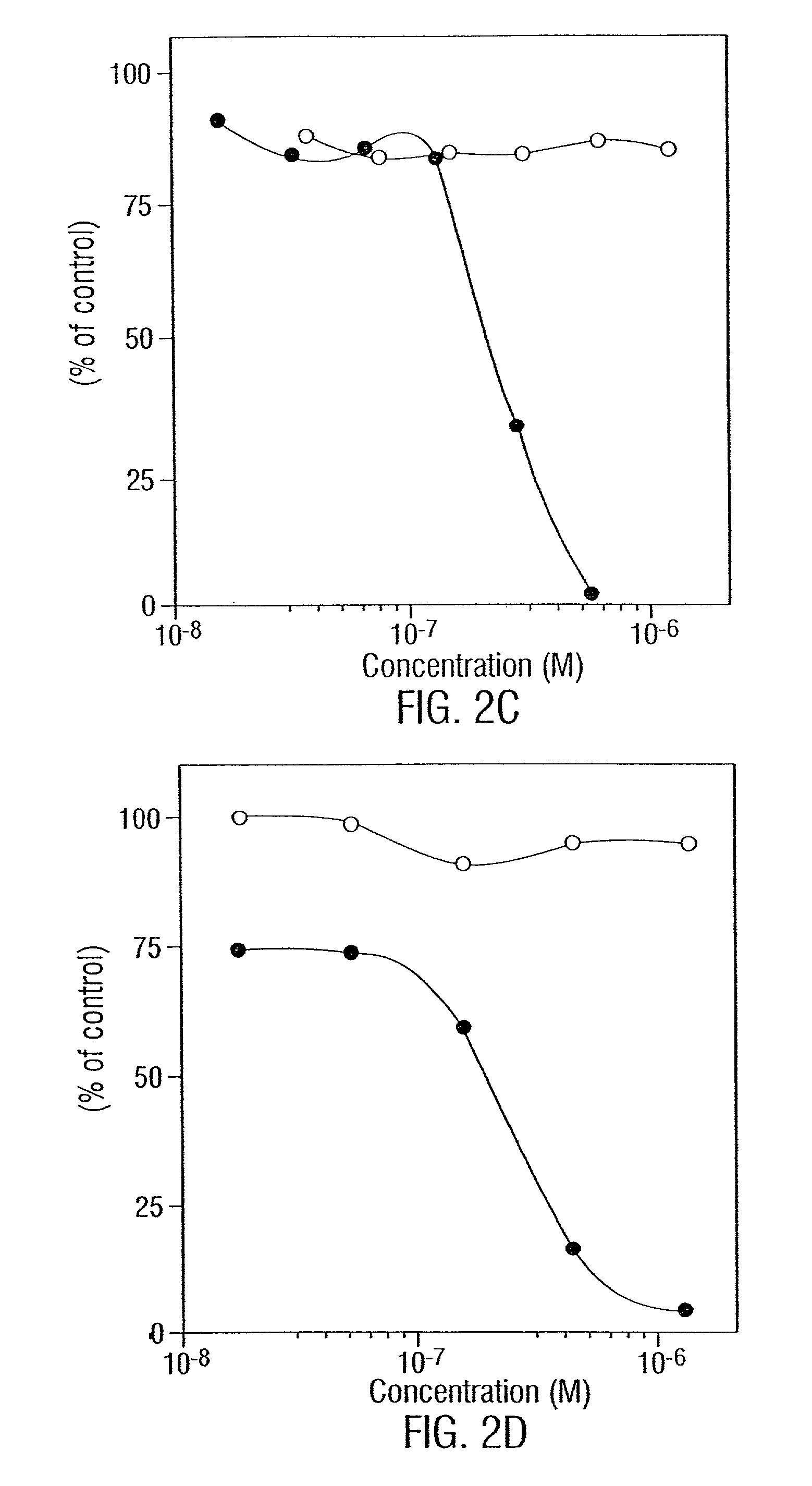Compositions and methods for homoconjugates of antibodies which induce growth arrest of apoptosis of tumor cells
a technology of tumor cells and antibodies, which is applied in the field of immunology and tumor therapy, can solve the problems of poor ability of mabs to crosslink their target molecules, unfulfilled therapeutic potential of mabs, and inability to readily mediate signals, so as to improve the negative signaling capacity of mabs, improve antitumor activity, and improve the effect of negative effects
- Summary
- Abstract
- Description
- Claims
- Application Information
AI Technical Summary
Benefits of technology
Problems solved by technology
Method used
Image
Examples
example 1
Homodimerization of MAbs Increases Signaling of Growth Arrest or Apoptosis of Tumor Cells
[0170]Cells.
[0171]Two human Burkitt's lymphoma cell lines, Daudi and Ramos, were maintained in culture by serial passage in RPMI 1640 medium containing 25 nmol / L HEPES, 10% heat-inactivated fetal bovine serum, 100 U / ml penicillin, 100 mg / ml streptomycin (complete medium), and 100 nmol / L L-glutamine. The cells were grown in a humidified atmosphere of 5% CO2 and air. Cell viability was determined by trypan blue exclusion. Cells from the breast cancer line, BT474 were maintained by serial passage in MEM containing 10% heat-inactivated fetal calf serum, 2 mM L-glutamine, 100 nM non-essential amino acids, 1 mM sodium pyruvate and 2% vitamins for MEM.
[0172]Preparation of the Anti-HER-2 MAb.
[0173]BALB / c mice were immunized with a recombinant form of the 641 amino acid extracellular domain of HER-2. Spleen cells from the immunized mice were harvested and fused with the myeloma cell line, SP2 / 0. The hybr...
example 2
Homo- and Heterodimers of MAbs
[0202]In order to determine what “combinations of epitopes” generate the most potent negative signal when bound to or crosslinked by antibodies a series of studies were done. First, different pairs of monomeric (IgG) signaling antibodies directed against CD19, -20, -21, -23, and -24 are used to determine if there are additive anti-growth effects. These MAbs are available commercially. [3H]-thymidine incorporation, CCA and apoptosis are measured to determine a) what pathways are involved and b) whether enhancement occurs in one or both pathways. Initial survey is limited to mixtures of two MAbs; however, it is envisioned that three or even four MAbs may be used. Initially target cells are cultured with an IC50 concentration of one MAb and a range of concentrations (10−10-10−6 M) of the other. CCA and apoptosis are analyzed at different time points (from 6-36 hours). These assays (Darzynkiewicz et al., 1992) are routine in the laboratory. Based on the res...
example 3
New Apoptosis-Inducing MAbs
[0203]Thus far, anti-IgM is the only antibody which induces apoptosis in B lymphoma cells (Racila et al., 1995). Since anti-IgM cannot be used clinically, anti-CD79 antibodies are prepared. The available anti-CD79 MAbs are of low affinity and do not signal. Since CD79 molecules are responsible for mIg-mediated signals and are associated with mIg on the cell surface (Wienands et al., 1996; Gold and DeFranco, 1994; Blum et al., 1993), should also signal apoptosis following hypercrosslinking. This signaling is verified by immunizing rabbits with immune complexes prepared with a MAb anti-CD79b and a detergent lysate of 109 Daudi cells. The complexes were isolated on a sucrose gradient and the rabbits were injected five times in Freund's adjuvant. At one month intervals after each boost, serum was obtained and tested by immunoprecipitating lysates of 125I-labeled Daudi cells. When bands corresponding to the molecular weights of CD79 were observed on autoradiogr...
PUM
| Property | Measurement | Unit |
|---|---|---|
| concentrations | aaaaa | aaaaa |
| volume | aaaaa | aaaaa |
| temperatures | aaaaa | aaaaa |
Abstract
Description
Claims
Application Information
 Login to View More
Login to View More - R&D
- Intellectual Property
- Life Sciences
- Materials
- Tech Scout
- Unparalleled Data Quality
- Higher Quality Content
- 60% Fewer Hallucinations
Browse by: Latest US Patents, China's latest patents, Technical Efficacy Thesaurus, Application Domain, Technology Topic, Popular Technical Reports.
© 2025 PatSnap. All rights reserved.Legal|Privacy policy|Modern Slavery Act Transparency Statement|Sitemap|About US| Contact US: help@patsnap.com



